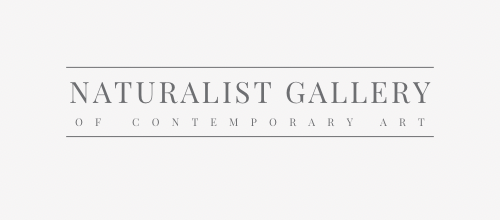Featured Image: Louise Nevelson (1958) Sky Cathedral
Form in art refers to the three-dimensional aspect of objects, shaping volume through length, width, and height. It encompasses sculptures and the illusion of depth in paintings, allowing artists to convey emotions, ideas, and expressions through physicality and abstraction.
It plays a vital role in conveying the physical structure, arrangement, and depth of a subject, whether it be a sculpture or a painting. This article explores the various aspects of form in art and its significance in artistic expression.
Explore our curated selection of contemporary artists from around the globe.
Naturalist Gallery offers artist representation internationally. Apply your art.

Alexander Calder (1932) Mobile
Defining Form in Art: Form is one of the seven fundamental elements of art, including line, shape, value, color, texture, and space. In art, form refers to the three-dimensional aspect of objects, presenting volume through length, width, and height. It is distinguished from shape, which pertains to two-dimensional representations. Forms can either be geometric, characterized by mathematical precision and named shapes like spheres and cubes, or organic, representing free-flowing, asymmetrical, and naturally occurring shapes.

Alberto Giacometti (1947) Man Pointing
The Role of Form in Sculpture: Sculpture is closely tied to form, being a three-dimensional art form where forms can be observed from various angles. Traditionally, sculptures were solid masses carved or modeled from materials like stone, clay, or wood. Sculpture in the round allows viewers to observe the work from all sides, while relief sculpture involves carving onto a flat surface, creating a scene that appears three-dimensional.

Frida Kahlo (1939) The Two Fridas
Form in Drawing and Painting: In two-dimensional art forms like drawing and painting, the illusion of three-dimensional form is achieved through the use of light, shadow, value, and tone. By understanding how light reacts on objects, artists can create the appearance of form on a flat surface. For instance, adjusting highlights, midtones, core shadows, cast shadows, and reflected highlights in a painting helps convey a sense of depth and dimension. Contrast in value plays a key role in enhancing the three-dimensional effect.

Dame Barbara Hepworth (1940) Sculpture with Colour (Deep Blue and Red)
Analyzing Form in Art: When analyzing a work of art, a formal analysis is conducted, focusing on the elements and principles of art rather than the artwork's meaning or emotions it evokes. This analysis provides insights into the compositional decisions that reinforce the artwork's content, essence, and the artist's intent. It can also offer clues about the historical context in which the work was created.
Caravaggio (1599-1600) The Calling of Saint Matthew
View limited edition prints by contemporary artists at Naturalist Gallery.
Form is a fundamental element of art that goes beyond mere physicality. It holds the potential to convey emotions, ideas, and expressions in both representational and abstract forms. From traditional sculpture to modern abstract art, understanding form enables artists to create meaningful and powerful visual experiences for their audience.
Constantin Brâncuși (1928) Bird in Space
You may also find the following articles helpful:
Tone in Art: Understanding Color Value
How to Clean and Preserve Oil Paintings
How to Get Your Work in an Art Gallery


